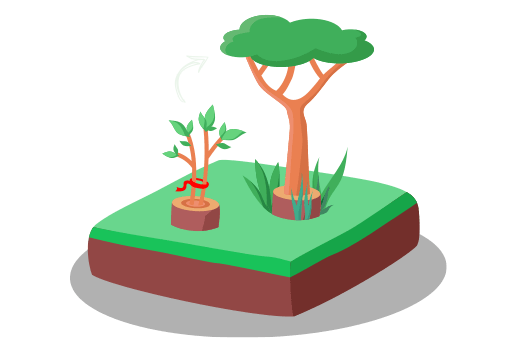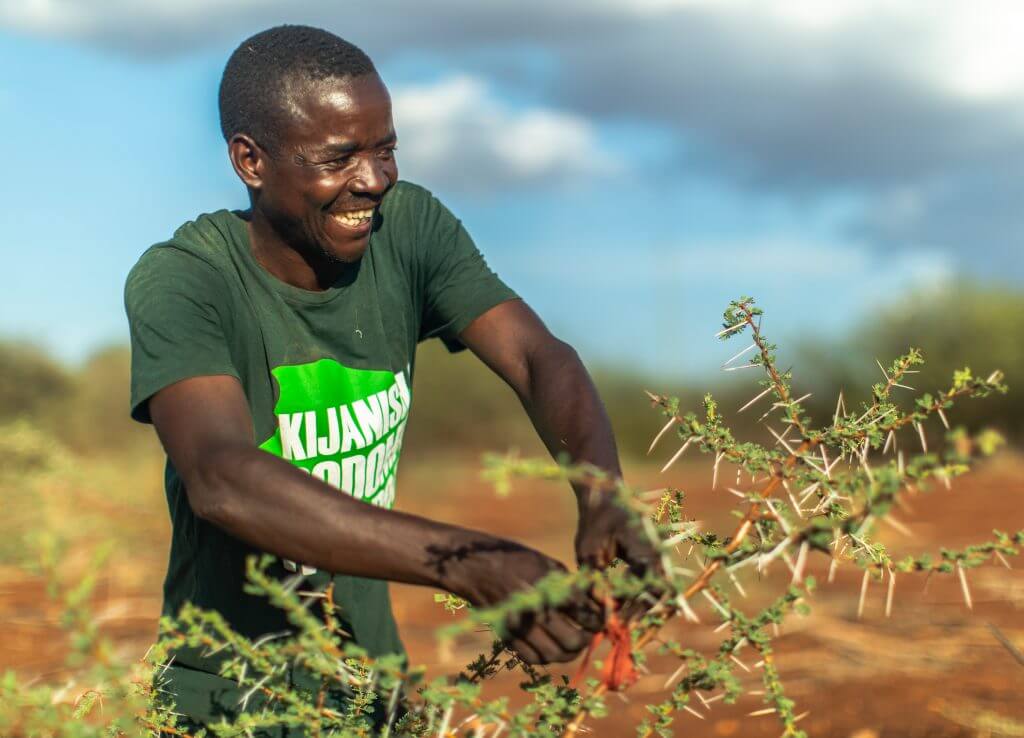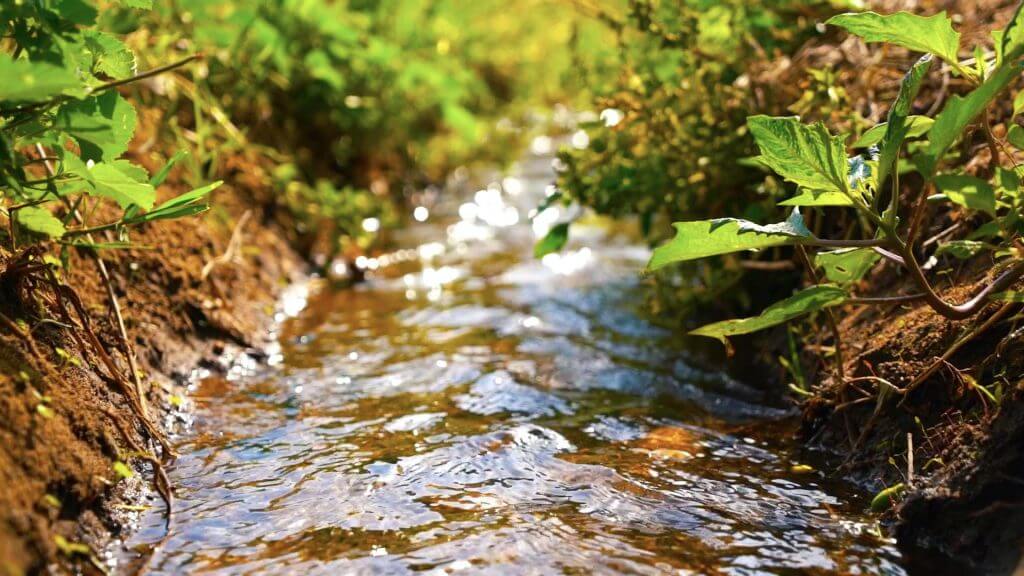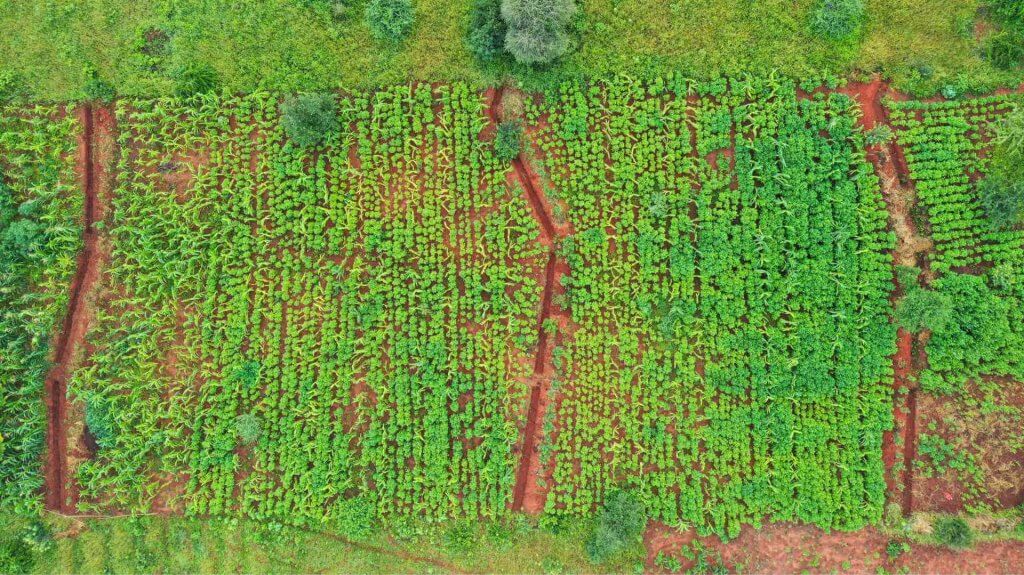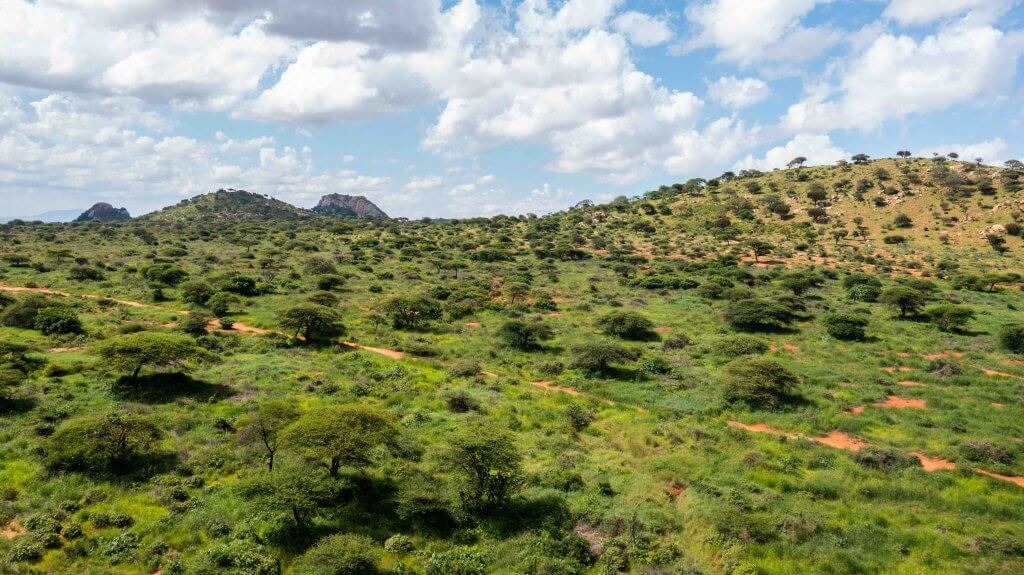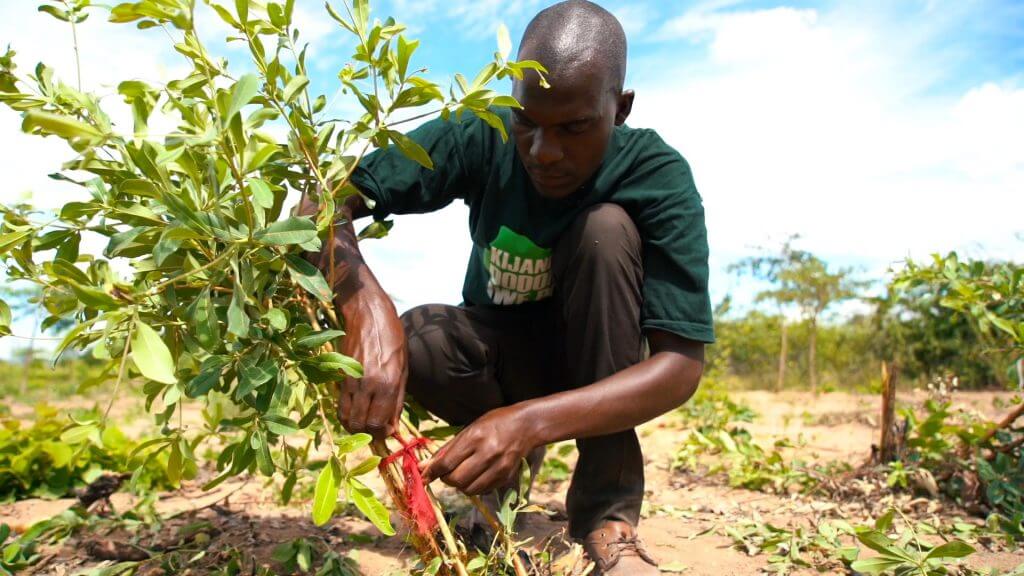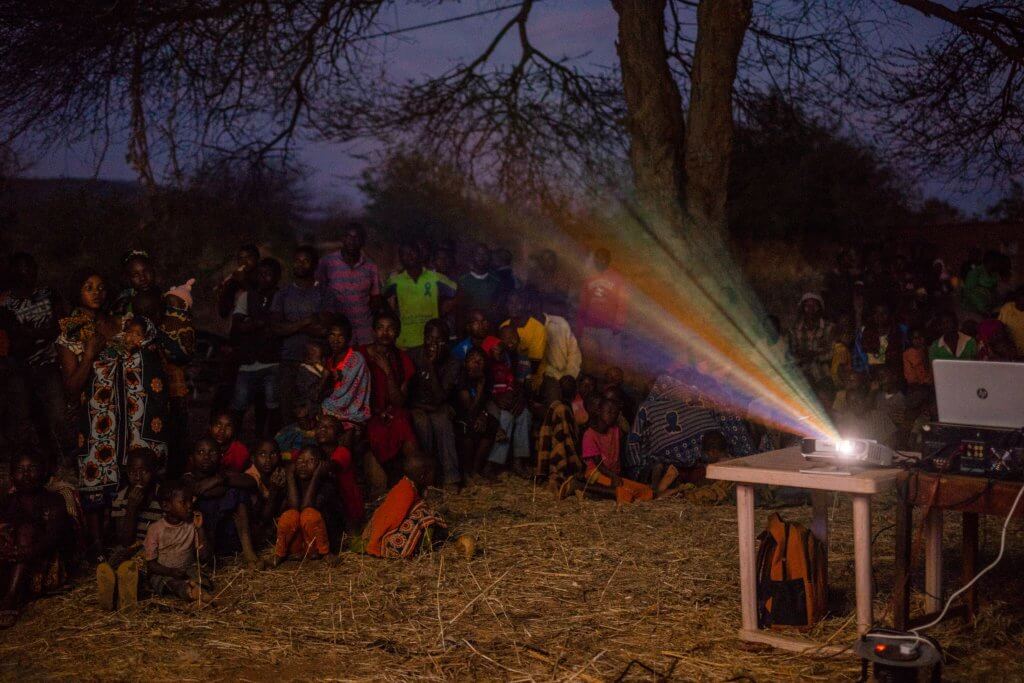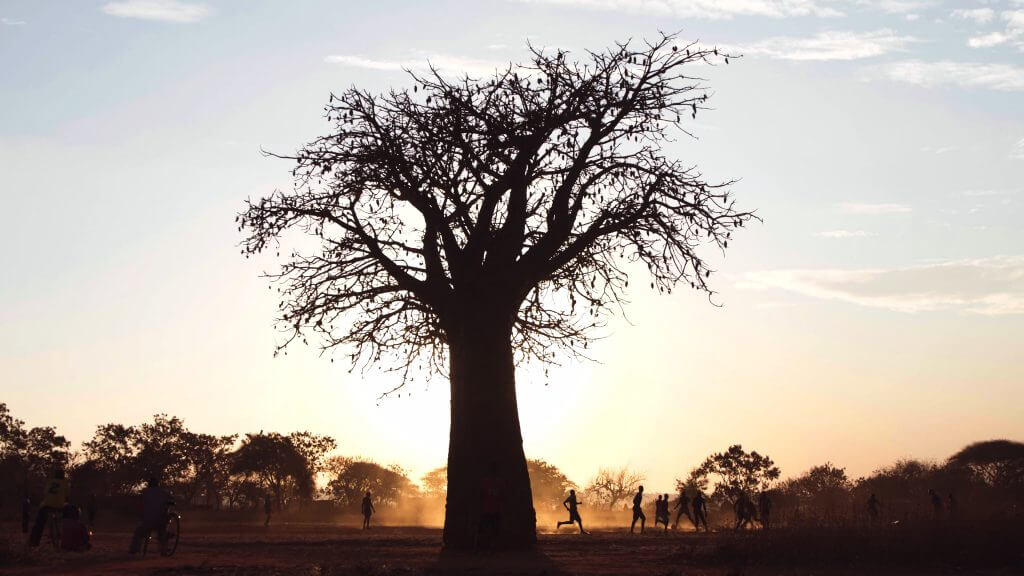Regreening project
Kuku, Kenya
Kuku, Kenya
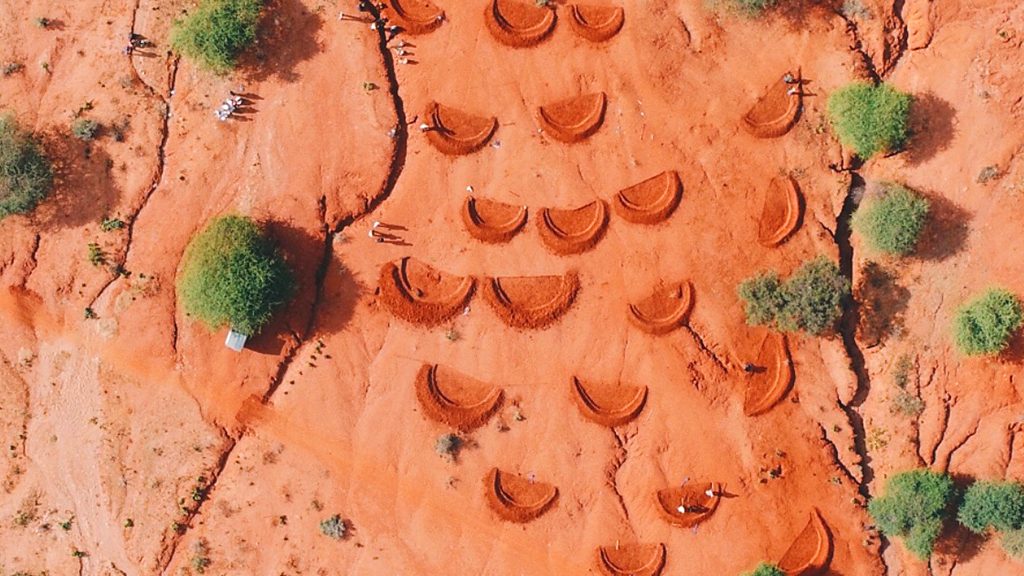
Bringing back millions of trees with Kisiki Hai
By using the farmer managed natural regeneration (FMNR) method and re-introducing rainwater harvesting practices, we aim to restore soils, re-green the area and improve the productivity of the land in the Dodoma region, central Tanzania.
Dodoma is the heart of Tanzania and home to the capital. With a surface of 41,311 km2 it has almost the size of the Netherlands. The population of the Dodoma region mostly depends on land for livelihood, which is used for small-scale agriculture and livestock keeping.
The past years the complex problem of deforestation, land degradation and climate change has continued to accelerate at an alarming rate. Ecosystems are brought out of balance, destroying their capacity to sustain biodiversity and to provide natural resources of water and fertile soil. To restore the degraded ecosystems and improve people’s livelihoods and climate change resilience in the Dodoma region, we partnered up with LEAD Foundation. Together with them we inspire and activate local farmers to start regreening their own land by using a combination of Farmer Managed Natural Regeneration (FMNR, or Kisiki Hai) and rainwater harvesting techniques. Until now over 15.2 million trees have been regenerated in the Dodoma region. And we’re still counting!
trees regenerated
liters of water retained in 2024
Fanya Juu & Fanya Chini
bunds dug
hectares are being restored
Our work brings back forgotten tree stumps by using a technique called Farmer Managed Natural Regeneration (FMNR), or – as we like to call it: Kisiki Hai. This is more effective than planting new trees!
By regenerating those trees, we are able to restore the degraded areas and make these areas green and cool again.
One of the main advantages bringing back vegetation is that it creates more moisture into the air. Vegetation “transpires”: it releases moisture into the air which cools it down. On a large enough scale, this helps to create clouds and increases the chance of rain, especially at the beginning and end of the rainy season, helping to restore the water cycle.
Fanya Juu and Fanya Chini are rainwater harvesting techniques. Farmers dig trenches along the contours within their farmland to prevent erosion and to capture the valuable rainwater within their land.
In total 120 kilometers of these contours have been dug by the farmers. With this contours, yearly 100 million liters of water are retained.
Fanya Juu Fanya Chini in Nzali, Dodoma
Bunds (or as we like to call them: “earth smiles”) are semi-circular shaped pits that capture rainwater.
They are dug in our project areas in order to capture rainwater that will otherwise get washed away over the dry, barren soil. By digging bunds, we can regreen a large area in a very short amount of time, benefiting biodiversity, nature, people and – eventually our climate.
Bunds in Pembamoto, Dodoma in Tanzania
Together with farmers and pastoralists, we are restoring hundreds of hectares of dry, degraded land in the counties of Dodoma, within the lower eastern regions of Tanzania. Bringing back vegetation has lots of positive effects on the climate, on the environment and biodiversity, on people and their livelihoods.
Farmer Managed Natural Regeneration (FMNR) or Kisiki Hai (‘living stump’ in Swahili), is a technique to regrow trees and support new, naturally occuring sprouts to grow big.
Together with LEAD Foundation we train local farmers to apply the technique on their own land, allowing the regeneration of millions of trees, regreening not only their own farmland, but also the whole Dodoma Region.
Want to learn more about the benefits of Kisiki Hai?
Fanya Juu and Fanya Chini are rainwater harvesting techniques. Farmers dig contours within their farmland to prevent erosion and to capture the valuable rainwater within their land.
Fanya Chini means ‘ throw it downwards’ in Swahili. It prevents the rain falling outside the farm from entering the farm, inhibiting erosion of fertile soil. Fanya Juu means ‘throw it upwards’, and prevents the rain falling within the farm to run off, increasing the water availability for the crops on the land. In the end, it helps the farmers to regreen their farms even more!
Want to learn more about the benefits of this technique?
Water bunds are semi-circular holes dug to open up the hard top layer of the soil.
The bunds slow down and capture rainwater running downhills, preventing erosion of fertile soil. The water balance in the soil restores, increasing the water availability for the seeds still present in the soil. These seeds now get the chance to sprout, which means: regreening!
By training 1,179 facilitators (so-called Champion Farmers), we can reach out to farmers in 300 villages in the Dodoma region.
These facilitators train their fellow farmers on how to regenerate trees on their own farmlands. This way thousands of farmers are activated to regreen their own land, bringing back millions of trees in the Dodoma region resulting in an increase in drought resilience, food production, and household income. The Campion Farmers are also trained in rainwater harvesting practices, helping them to regreen the land even further.
We believe that it is not only important to train people how to regreen their land, but also find other ways to reach and inspire them. By building a real regreening movement we aim to reach and inspire millions of farmers within the Dodoma region.
Part of this regreening movement is our movie roadshow: a video-caravan going from village to village, reaching 324 villages in total. The roadshow is a whole day event, filled with theatre, music, dance and performances all about Kisiki Hai. When the evening falls, a large movie-theatre screen is set up, which shows the inspiring movie Kisiki Hai II that is filmed entirely in the Dodoma-region.
To spread the regreening movement even further, we’ve set up various approaches to reach and inspire farmers, without physically visiting them. This way we are also able to inspire farmers outside the Dodoma region!
Together with partners LEAD Foundation, Dodoma FM, and Farm Radio International, we developed a special Kiski Hai radio program. The goal of the show is to inform, inspire and activate farmers to start practicing Kisiki Hai on their own land, in a fun and entertaining way. Up to now already 300,000 people have listened to the show!
We’ve also set up a Kisiki Hai SMS service together with partner LEAD Foundation and Service Platform Climate Edge. Farmers can subscribe to this service, which will send them a text message every week with tips and tricks on how to practice Kisiki Hai and Fanya Juu, and Fanya Chini. Until now, 68,000 farmers have been subscribed.
To truly understand how nature-based solutions transform entire landscapes, ecosystems and communities, you have to see it with your own eyes.
And that’s where we run into a problem: we can’t transport the entire world to our project areas. With this interactive experience, we found a solution. We decided to bring our regreening projects directly to you. Virtually, wherever you are. Come on in and experience the Water bund site and Treecovery farm!
We are on a mission to regreen Africa in the next 10 years, together with millions of farmers, and together with you.
If we want to cool down the planet in one decade, everyone needs to be in on the change. Our use of the power of media, communication, data, and the latest technology helps spread our message and scale up. We want to inspire, unite and empower an entire generation, growing a landscape restoration movement.
A Tanzanian story
Rainmakers III tells the story about the spread of an idea which can help to bring millions of trees back to life: Kisiki Hai! A message full of positivity and hope. It shows the positive benefits of trees on all different aspects and teaches you about our work in Dodoma, Tanzania.
Rainmakers III, A Tanzanian Story
